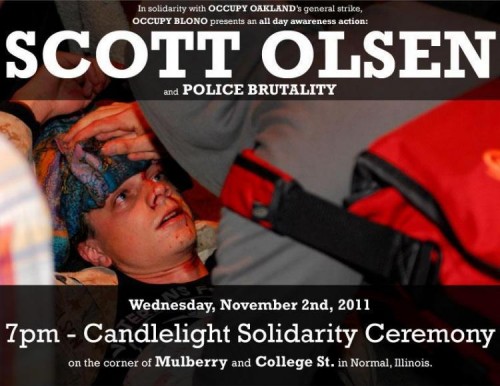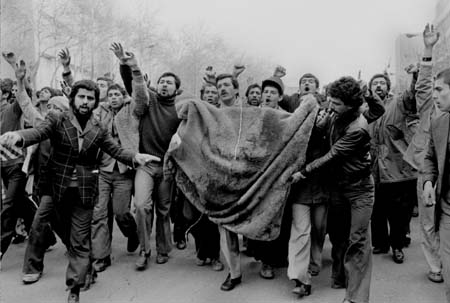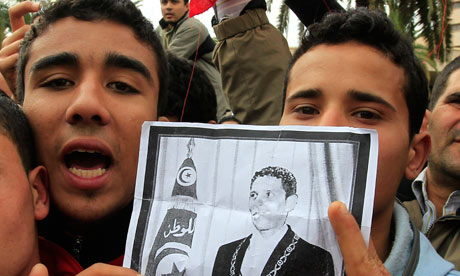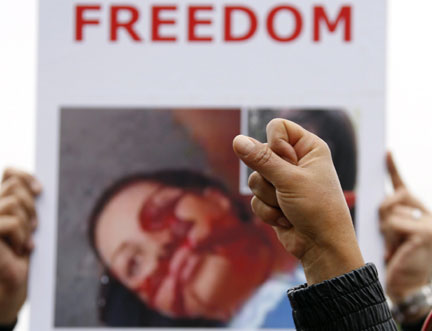
The idea that bodies are the loci and the focus for the movement of power is a well-established one in sociological thought. In this sense, bodies are inherently political things – they are not just sites for the production and reproduction of social power but they also have political significance. What they do matters; what happens to them and why matters. In social theory this is often centered around Foucauldian concepts of discipline and the production of knowledge, but for the purposes of this post I want to go back to a previous post, where I made an argument specifically about the political significance of bodies in contexts of violent protest:
[B]odies have symbolic weight and power, and often they have the most symbolic weight and power of any other part of the movement. A dramatic flush of international outrage was generated around the film of Neda Agha-Soltan bleeding to death in a Tehran street, but it was the physical suffering and death of her physical body that generated that rage. Outrage grew exponentially out of the footage and images of Lt. John Pike pepper-spraying seated UC Davis students, but again, that outrage was generated by and situated around the physical suffering of physical bodies.
It’s important to emphasize the aspect of physical suffering in itself; the body carries political, discursive significance not only when it is intact but when – sometimes especially when – it is in the process of being damaged and destroyed. And the context of this damage and destruction – the circumstances under which it occurs – is part of what imbues the body with its significance and alters what nature it already has.
This altering is a crucial point, and derives its importance from what the body is prior to being destroyed. In The Body in Pain, Elaine Scarry notes the degree to which “the nation” as a set of culturally embedded behavioral practices inscribes itself within the body (such as in particular facial expressions of emotion), and what it means when that political body is altered:
While in peacetime a person may literally absorb the political reality of the state into his body by lifting his eyebrows – by altering for the sake of and in unselfconscious recognition of his membership in the larger political community the reflex of a small set of muscles in his forehead – now in war he is agreeing by entering a certain terrain and participating in certain acts to the tearing out of his forehead, eyebrows, and eyes.
As Martha McCaughey and Michael Ayers have observed, the danger and frequent suffering to which physical bodies are subject in street protests is part of what makes street protest powerful. During the Islamic Revolution of 1979 in Iran, protesters wore white funereal shrouds to face down the soldiers of the Shah in order to signify that they were willing to die for their cause; the potential destruction of their physical bodies became a tool and a tactic for their movement. It was physical, and more importantly it was visual: it was the image of protesters in white shrouds that was powerful.

Images of protesters in danger and in pain are more than iconic. They are visual articulations of who the parties involved are and what’s at stake (which may or may not bear a close resemblance to the truth of the situation). They can inspire further political action in response – protests and rallies in solidarity, or the mobilization into the movement of people who might not otherwise have gotten involved.
The workings of this process, then, have two primary elements: the body in danger or pain and the image of the body, viewed and responded to by other bodies. In social movement scholarship, these images are a feature of framing – which, in its capacity to shape the narrative around a movement and to mobilize additional actors, is vital to the trajectory of the movement itself.
The idea that technology contributes to this process is not new either: Doug McAdam (among others) has explored the question of how the media contributed to the diffusion of the Civil Rights movement through coverage of protests, especially visual coverage. But in the context of augmented contention – in an atmosphere of ambient documentation – images are captured and spread at an unprecedented speed, and frequently difficult to control on the part of repressive regimes.
When Mohamed Bouazizi set himself on fire, the news of it – often shared via the internet – helped to spark a revolution. When the footage of Neda Agha-Soltan’s death was spread through Youtube, it helped to spur global solidarity demonstrations on the part of Iranian diaspora and supporters alike. When Livestream footage of police brutality against Occupy protesters in New York City and Oakland and cell phone footage of students being pepper-sprayed at UC Davis hit the internet, people began to pay careful attention to Occupy.

Bodies are political. Injured and destroyed bodies have political power, and images of those bodies allow that power to reach farther and do more. ICTs and social media, through their capacity to spread information – especially visual information – amplify and extend the political power of injured bodies on a massive scale. They don’t create the signal, but they boost it and help to prevent it from being stopped.
It’s important to be clear on this point: I am arguing not just for the capacity of technology to contribute to framing processes – which is already fairly well-accepted – but for the capacity of technology to amplify the political, world-altering power within the body and within the act of that body’s destruction. What still remains to be seen are the precise ways in which these processes work within and reshape other processes, mechanisms, and features of the political landscape.


Comments 3
Rogerd — August 16, 2012
...Recommended websites...
[...]I am no longer certain the place you're getting your information, but great topic.[...]...
War Games & War Stories: Part I – Black/white/gray all over » Cyborgology — October 4, 2012
[...] cause, and make powerful suggestions about the way in which war can be won. The emphasis on the sacrifice of the body and the meaning of injury is significant: death in war is not only not entirely a negative, but one can have confidence that [...]
War Games & War Stories – Full Essay (parts I, II, and III) » Cyborgology — October 23, 2012
[...] cause, and make powerful suggestions about the way in which war can be won. The emphasis on the sacrifice of the body and the meaning of injury is significant: death in war is not only not entirely a negative, but one can have confidence that [...]